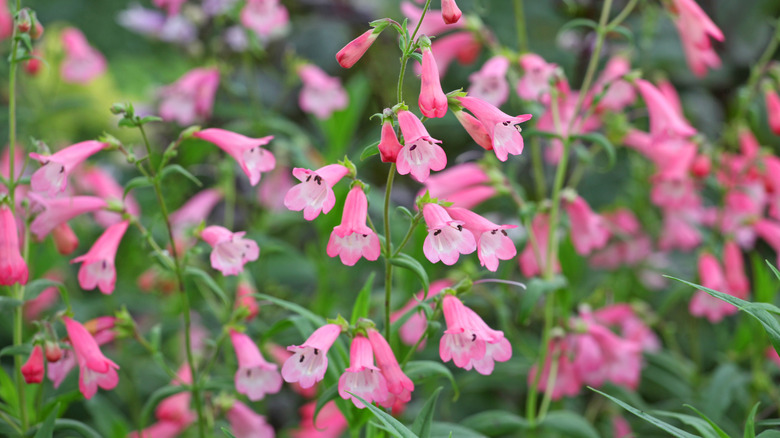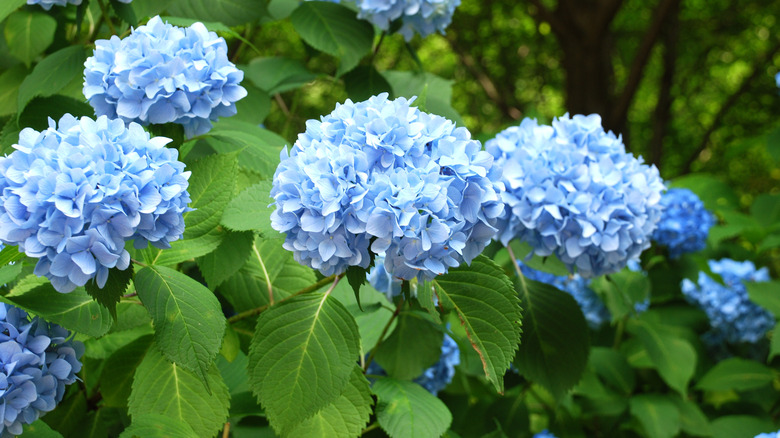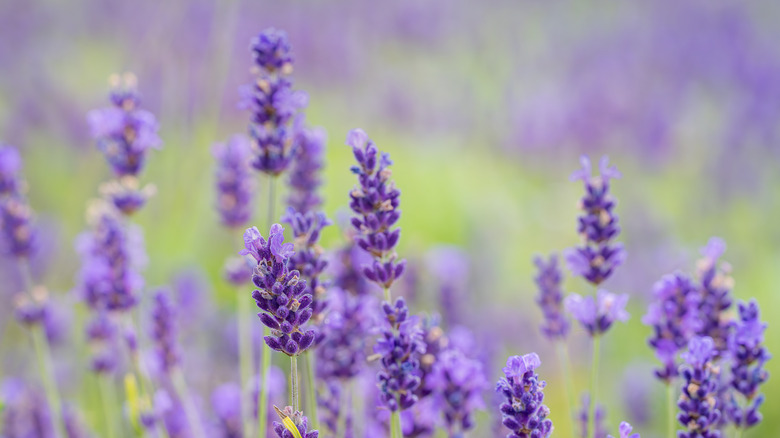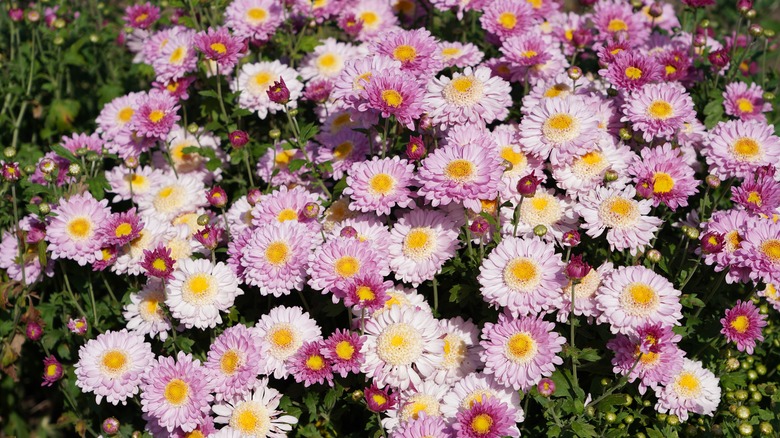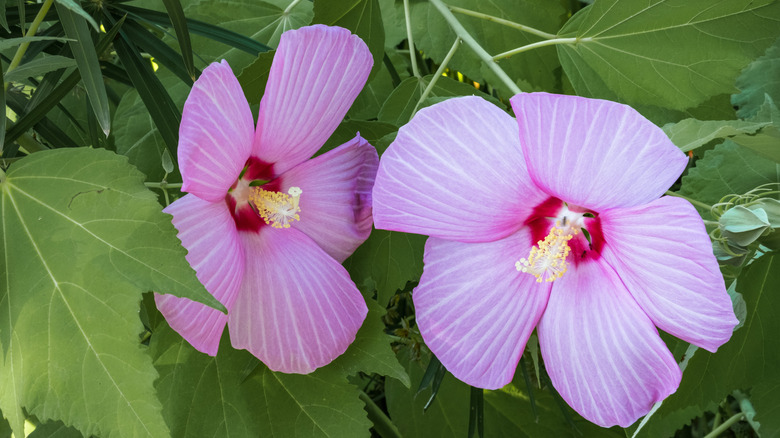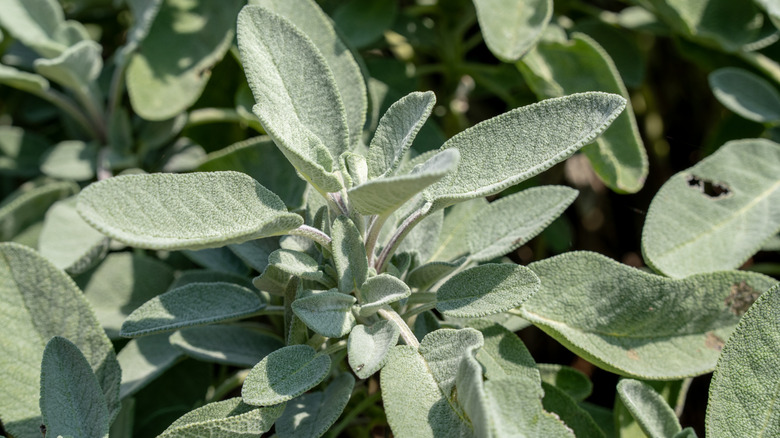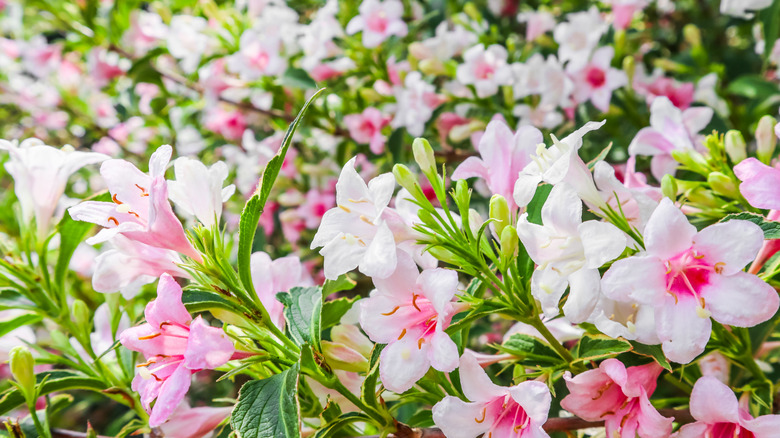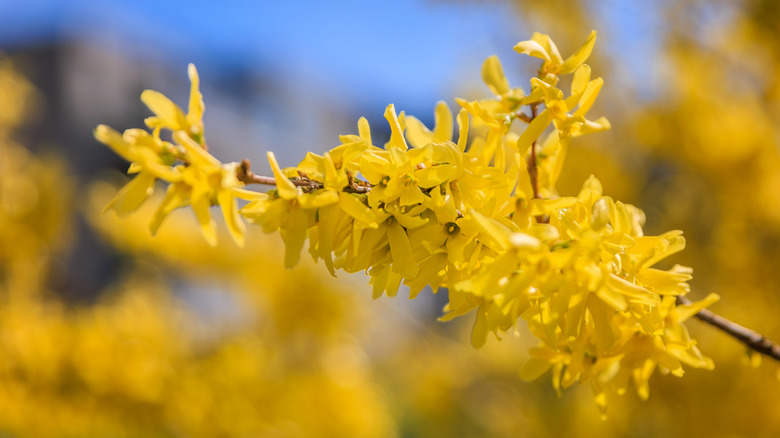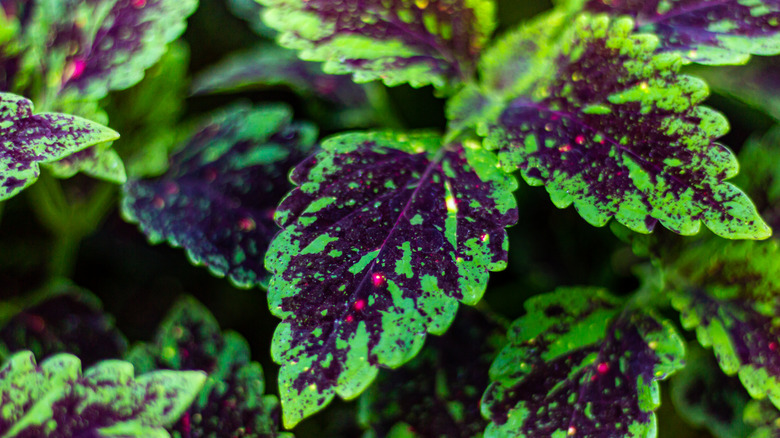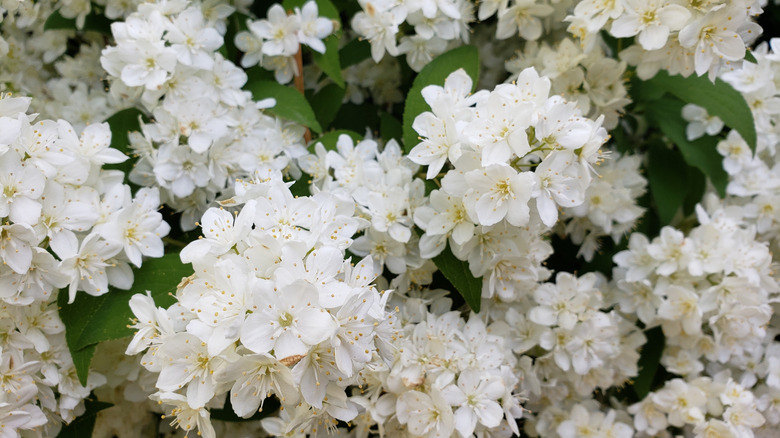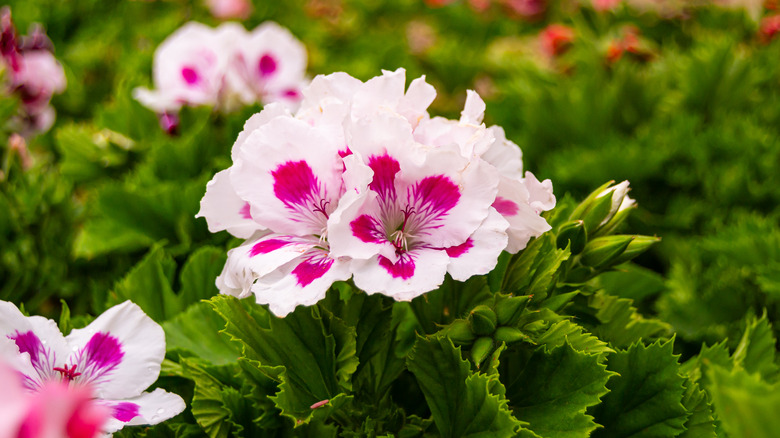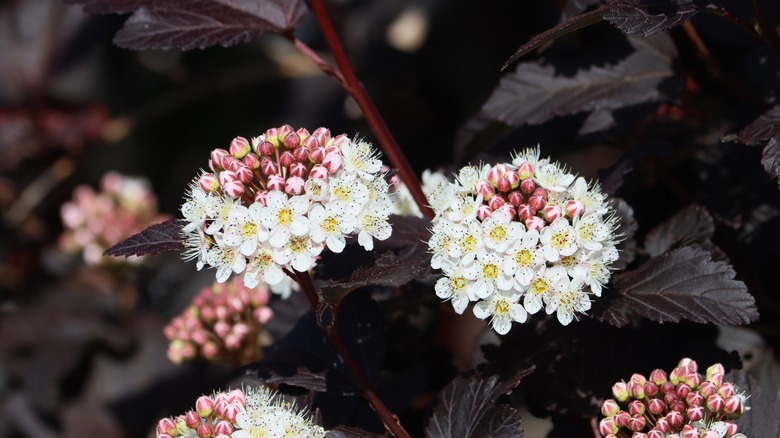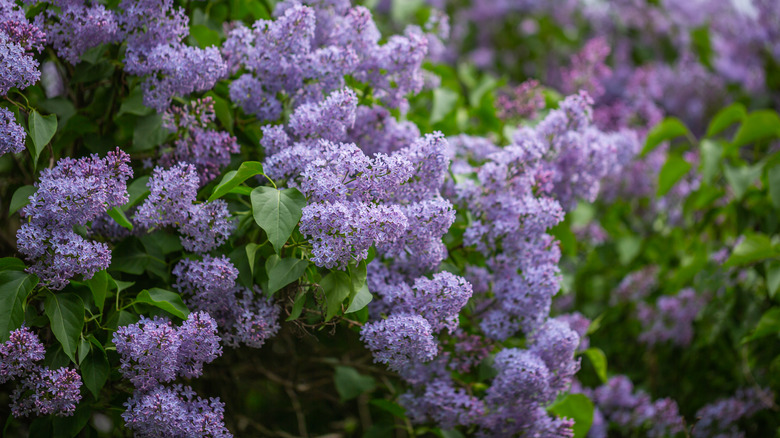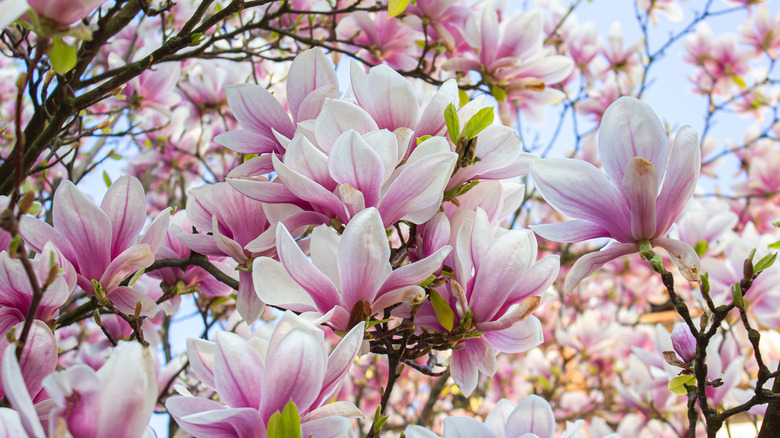15 Plants That Grow Well From Softwood Cuttings
Taking cuttings from your existing plants and creating new plant babies from them is a fun, rewarding, and fairly simple process. It is super exciting to see new buds and stems appear from your softwood cuttings, and you can propagate loads of your favorite shrubs and flowers with this method. If you have roses, hydrangeas, or magnolias in your yard, it is time to get out the pruning shears and take off some fresh, softwood growth!
Softwood cuttings are taken from this season's growth, usually in May, June, or July. The cutting you take should be soft and fresh, with the youngest leaves not yet mature. When you take a softwood cutting, you must cut just below a node (this is where the leaves are attached to the stem). Then, you need to remove the lower leaves and any flowers from the cutting and dip the bottom in rooting hormone. Once that is done, your cuttings should be placed in a rooting medium. When it comes to care, your cuttings will need a place in indirect light and regular watering. Cuttings usually need to be kept moist, so you may wish to place a clear plastic bag over or around the pot to create a mini-greenhouse.
Penstemons
Penstemons (Penstemon spp.) are beautiful perennials that bring stunning blooms of red, purple, pink, orange, and white into your yard. A favorite flower for many gardeners, penstemons are also beloved by butterflies, bees, and hummingbirds, making your garden a haven for wildlife. You can multiply your penstemons through softwood cuttings by taking the cuttings from the tip of a non-flowering stem. You need to take a few inches of stem that has four to six pairs of nodes. Once you have planted your penstemon cuttings, they should be kept warm.
Hydrangeas
With their iconic clusters of flowers, hydrangeas (Hydrangea spp.) are a staple in many gardens across the U.S. These gorgeous blooms can be propagated easily from softwood cuttings taken from the shrub in early summer. Cut 5 or 6 inches from a shoot that doesn't have a flower and remove all leaves except the top ones. Then, after applying a rooting hormone, place the cuttings in a moist, prepped medium of half potting soil and half perlite, vermiculite, or sand. Ensure 2 inches of the cutting is buried in the soil, and keep the cutting moist as it grows.
Lavender
Although there are loads of different ways you can propagate common lavender (Lavandula angustifolia), this aromatic shrub can grow quite easily from softwood cuttings. Take 2 or 3 inches of healthy growth from your lavender plant, then remove all the leaves except the top two. Once that is done, place the cutting in moist, sandy soil. Ensure you are taking the cuttings from an established plant that is at least two years old. Keep your lavender cuttings moist with a spray bottle, but watch out for the soil getting too waterlogged.
Roses
There is nothing as classy as a rose (Rosa spp.) garden, and thankfully, you can create your own by getting endless roses through propagation. For propagation through softwood cuttings, the best time is in late spring or early fall when the weather is milder. Pick a stem that is about the thickness of a pencil, ensuring that the wood is straight and ripe. Take off about 9 inches, cutting just below a node at the bottom, then remove all leaves and thorns from the bottom half. Plant your cutting half covered in potting soil or sand.
Chrysanthemums
A fall yard is never the same without garden mums (Chrysanthemum x morifolium) to brighten it up, and you can double your blooms through propagation. Take cuttings from an established plant in late spring or early summer, cutting off the upper 3 or 4 inches from new shoots. Place the cuttings in shallow pots or boxes filled with sand or sterile rooting material. Bury each cutting 1½ inches deep and keep them moist and at a temperature of around 65 degrees Fahrenheit. Make sure the cuttings are protected from direct sunlight.
Rose mallow
With its huge flowers that bloom from midsummer to fall, rose mallow (Hibiscus moscheutos) is a striking native plant. If you have the space for more of these beauties in your yard, you can easily create new baby rose mallows using cuttings. Although you can propagate rose mallow throughout the year, cuttings taken in early July will root more readily. Take off 5 to 6 inches of new growth, ensuring that the stem is about the thickness of a pencil. Then, place the cutting in a medium mix of three parts sand and one part peat.
Sage
As sage plants (Salvia officinalis) can get a bit woody after 4 or 5 years, it is a good idea to propagate them every few years so you have fresh herbs for your kitchen. Take cuttings from your sage in the summer, removing around 4 inches of growth from the plant. Cut just below the node and place it in a mix of sand and peat. You can propagate sage cuttings in water if you prefer, placing the stem in a small, glass jar of clean, non-chlorinated water. Remember to change the water every three to four days.
Weigela
Weigela (Weigela florida) is a dense, round bush that can be a great border or foundation plant. Although it can grow to a height of 10 feet, there are smaller cultivars available that you can bring into your garden or grow in containers. When it comes to propagation, you can take softwood cuttings from your weigela after its flowering period is over in the summer months. Try to take from a shoot that did not flower, cutting off 6 to 8 inches from the bush. Cut the stem diagonally and remove all but three or four leaves.
Forsythia
With its bright yellow flowers exploding in the early spring, forsythia (Forsythia spp.) livens up your yard when most of the other perennials are still deep in their winter snooze. Forsythia is a very easy shrub to propagate through softwood cuttings, allowing you to multiply these sunny blooms. In late June or early July, take off 4 to 6 inches of new growth from your forsythia. After removing the lower leaves and dipping the stem in rooting hormone, place your cutting in a large pot filled with coarse sand or perlite.
Coleus
As a fast-growing shade plant, coleus (Coleus spp.) brings color and texture into those darker corners of your yard. Although coleus plants are annuals, you can take softwood cuttings from them to overwinter. This will allow you to have new plants the following year. Cut off 4 to 6 inches of a healthy coleus stem, then remove the leaves from the bottom. You can then put the cuttings in moist potting soil, a sterile medium, or water for them to take root. Once they have roots, transplant them into a larger container.
Slender deutzia
Slender deutzia (Deutzia gracilis) is a beautiful plant that produces delicate white blooms in the springtime. Often overlooked for more well-known garden shrubs, this beautiful plant can grow to around 5 feet tall. If you are lucky enough to have a slender deutzia in your yard, you can create new plants by taking softwood cuttings in June or July. Cut off 4 to 6 inches of a fresh stem, dip the bottom in rooting hormone, and place the cutting in a rooting medium. Your slender deutzia cuttings will root in three to four weeks.
Tender geraniums
Tender geraniums (Pelargonium spp.) are charming, long-blooming flowers. Whether you grow them as houseplants or outdoor annuals, you can propagate your favorite tender geraniums from cuttings easily enough. Take off 3 or 4 inches of the stem tip, then place the cutting in a rooting medium, such as sand, perlite, or peat moss. After six to eight weeks, your geranium cuttings will start to root. Once they have a decent root system, repot them. You can also put your geranium cuttings in water, using little glass jars that support the stem.
Common ninebark
Common ninebark (Physocarpus opulifolius) is a native shrub that produces pink-white clusters of flowers in the spring. With a range of cultivars available, from types with deep purple leaves to varieties with bright, lime green foliage, there is a common ninebark perfect for any garden. You can propagate your common ninebark by taking softwood cuttings from the shrub in the summer. They need to be placed in a sand or peat medium and kept at a temperature of around 60 degrees Fahrenheit to promote healthy, strong root growth.
Lilacs
There are loads of different ways to propagate lilacs (Syringa spp.), including seed propagation and division. However, softwood cuttings can be a fun way to create new lilac plants. When propagating your lilac through softwood cuttings, ensure you take a few more cuttings than you need, as some may fail to root. Take off around 6 inches of new, healthy growth and strip the stem, only leaving a few leaves at the top. Dip your cuttings in a strong rooting hormone and place them in pots, ensuring that at least two nodes are covered with soil.
Magnolias
There is nothing as awe-inspiring as a magnolia tree (Magnolia spp.) in bloom. To create more awe and wonder in your yard, you can propagate from your magnolia tree by taking 6 to 8 inches of newly developed shoots. Place them in a jar of water as soon as you take the cutting, as this will stop them from drying out. After removing all the leaves except for the top two, plant your magnolia cuttings in a plastic container that is around 10 to 12 inches deep and filled with a rooting medium.

